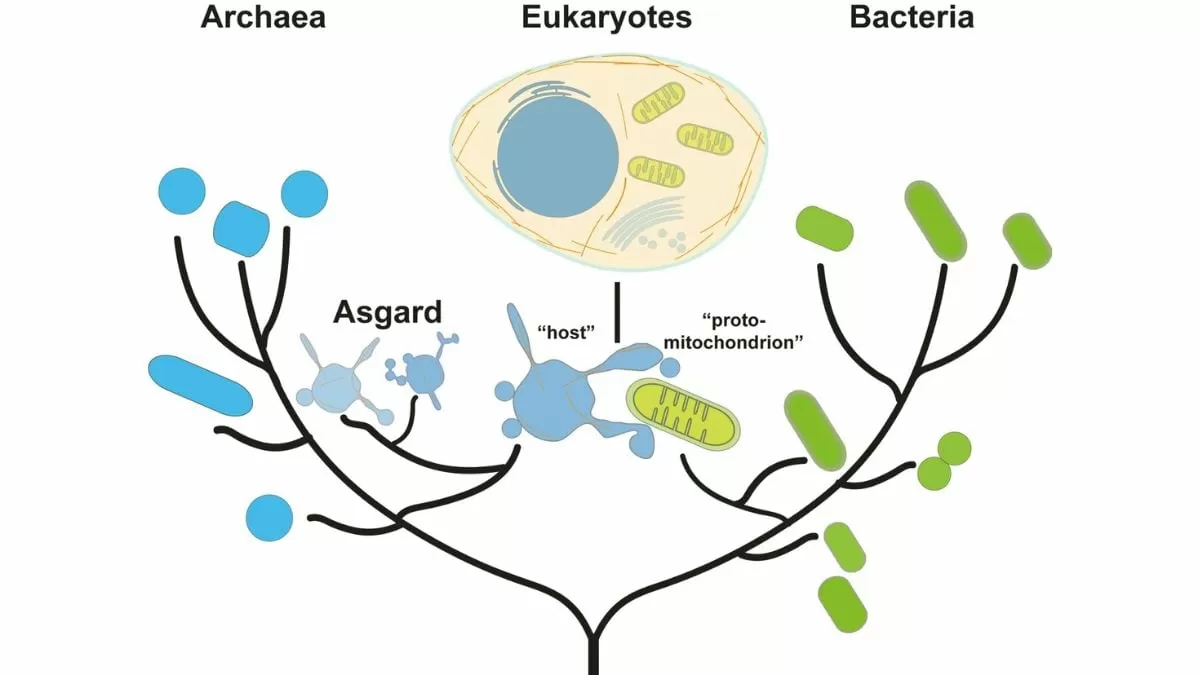Asgard archaea, a group of single-celled organisms, may hold the key to understanding the evolution of complex life on Earth. In a groundbreaking study, researchers at ETH Zurich have identified cytoskeletal proteins in these microbes that are strikingly similar to those found in eukaryotic cells. This discovery challenges the traditional three-domain model of life and suggests that Asgard archaea may have played a crucial role in the development of complex life forms.
For many years, scientists have believed that all living organisms on Earth can be classified into three distinct domains – bacteria, archaea, and eukaryotes. Eukaryotes, which include plants, animals, and fungi, are characterized by the presence of a nucleus and other membrane-bound organelles. This complex cellular structure is thought to have evolved from simpler prokaryotic cells, such as bacteria and archaea. However, the exact origins of eukaryotes have remained a mystery.
Enter Asgard archaea – a recently discovered group of microbes that have captured the attention of scientists. These microbes were first identified in 2015, in sediment samples collected from the seabed near a hydrothermal vent system in the Arctic Ocean. They were named after the realm of the gods in Norse mythology, as they were found in a place where no other life forms could survive. Since then, Asgard archaea have been found in various environments, including deep-sea sediments, hot springs, and even the human gut.
What makes Asgard archaea so intriguing to scientists is their genetic makeup. In 2017, a team of researchers from the University of Vienna and Uppsala University sequenced the genome of one species of Asgard archaea, called Lokiarchaeota. They found that this microbe possesses a large number of genes that are commonly found in eukaryotes, including genes involved in the formation of the cytoskeleton – a network of protein filaments that give shape and structure to cells.
This discovery sparked the interest of Dr. Christa Schleper and her team at ETH Zurich. They set out to investigate whether Asgard archaea actually produce cytoskeletal proteins and if these proteins are similar to those found in eukaryotes. Their findings, published in the journal Nature Microbiology, have shed new light on the evolution of complex life on our planet.
Using advanced microscopy techniques, the researchers were able to visualize the cytoskeleton of two species of Asgard archaea, called Heimdallarchaeota and Odinarchaeota. They found that these microbes produce actin and tubulin – two key components of the cytoskeleton in eukaryotic cells. These proteins are responsible for cell movement, division, and maintaining cell shape. The researchers also identified other cytoskeletal proteins in Asgard archaea that are similar to those found in eukaryotes, including septins and formins.
These findings have challenged the traditional three-domain model of life, which suggests that eukaryotes evolved from a common ancestor of bacteria and archaea. According to this model, the cytoskeletal proteins found in eukaryotes should be absent in archaea. However, the discovery of these proteins in Asgard archaea suggests that these microbes might have played a crucial role in the evolution of complex life forms.
Dr. Schleper explains, “Our findings suggest that Asgard archaea may have enabled key interactions that led to the development of complex life on Earth. They may have provided the necessary machinery for eukaryotes to evolve and thrive.” This theory is supported by the fact that Asgard archaea are often found in close proximity to other microbes, suggesting that they may have formed symbiotic relationships with them.
The study also has important implications for our understanding of the human microbiome – the community of microorganisms that live in and on our bodies. Asgard archaea have been found in the human gut, and their presence has been linked to certain health conditions. Further research on these microbes could help us better understand their role in human health and disease.
In conclusion, the discovery of cytoskeletal proteins in Asgard archaea has opened up new avenues for research and has challenged our current understanding of the evolution of complex life on Earth. This groundbreaking study by the researchers at ETH Zurich has paved the way for future studies on these fascinating microbes and their role in shaping the diversity of life on our planet. Who knows what other secrets

